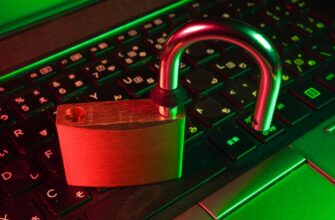How to Encrypt Account Safely for Beginners: A Step-by-Step Guide
In today’s digital world, your online accounts hold everything from personal photos to banking details. Hackers constantly target this data, making encryption essential armor for your digital life. If you’re new to cybersecurity, learning to encrypt account safely for beginners might seem daunting—but it’s simpler than you think. This guide breaks down encryption into easy steps, empowering you to protect your accounts confidently.
What is Encryption and Why Do You Need It?
Encryption scrambles your data into unreadable code using mathematical algorithms. Only someone with the right “key” (like a password) can unlock it. Without encryption, hackers can easily intercept your emails, messages, or login details on unsecured networks. For beginners, understanding this is crucial: encryption turns your vulnerable information into a fortress. It protects against identity theft, financial fraud, and privacy breaches. Ignoring it is like leaving your house unlocked in a busy neighborhood—eventually, someone unwanted will walk in.
Essential Encryption Tools for Beginners
You don’t need to be a tech expert to start encrypting. These user-friendly tools do the heavy lifting for you:
- Password Managers (e.g., Bitwarden, 1Password): Generate and store uncrackable passwords, encrypting them behind one master key.
- Two-Factor Authentication (2FA): Adds a second verification step (like a text code or app notification) beyond your password.
- Encrypted Messaging Apps (e.g., Signal, WhatsApp): Scramble your chats so only you and the recipient can read them.
- Device Encryption: Built-in tools like BitLocker (Windows) or FileVault (Mac) secure your entire laptop or phone.
- VPN Services: Encrypt internet traffic on public Wi-Fi, shielding your activity from snoopers.
Step-by-Step Guide to Encrypting Your Accounts
Follow these beginner-friendly steps to encrypt your accounts safely today:
- Enable Full-Disk Encryption: On Windows, activate BitLocker; on Mac, turn on FileVault. This encrypts your device if lost or stolen.
- Install a Password Manager: Choose a reputable tool, create a strong master password (12+ characters, mix letters, numbers, symbols), and let it generate unique passwords for every account.
- Activate Two-Factor Authentication (2FA): Go to security settings in critical accounts (email, banking, social media) and enable 2FA via an app like Google Authenticator.
- Switch to Encrypted Communication: Use Signal for sensitive chats and ensure websites have “HTTPS” in the URL before logging in.
- Update Regularly: Enable automatic updates for your OS, apps, and antivirus software to patch security flaws.
Common Encryption Mistakes to Avoid
Even small errors can undermine your efforts. Steer clear of these pitfalls:
- Reusing Passwords: If one account is hacked, all accounts with the same password are at risk. Always use unique passwords.
- Ignoring 2FA: Skipping this step leaves accounts vulnerable. Avoid SMS-based 2FA if possible—use authenticator apps instead.
- Weak Master Passwords:”password123″ won’t cut it. Aim for complexity and length (e.g., “BlueCoffee$42!Sky”).
- Storing Keys Insecurely: Never save encryption keys or recovery codes in plain text files. Use your password manager or a locked physical safe.
- Forgetting Backups: If you lose your encryption key, data is gone forever. Back up keys offline (e.g., printed paper in a secure location).
FAQ: Encryption for Beginners
Q: What’s the easiest way to start encrypting as a beginner?
A: Begin with a password manager and 2FA. They automate encryption with minimal effort.
Q: Is encryption legal for personal use?
A: Absolutely! It’s your right to protect personal data in most countries.
Q: What if I forget my master password or encryption key?
A: Recovery is impossible without backups. Use your password manager’s emergency kit or store printed keys securely.
Q: Does encryption slow down my devices?
A: Modern tools have negligible impact on speed. The security boost far outweighs any minor lag.
Q: Can hackers still break encrypted accounts?
A> It’s extremely difficult with strong passwords and 2FA. Encryption makes you a “hard target,” so attackers often move on.
By following this guide, you’ve taken a huge leap toward digital safety. Remember: encrypting your accounts isn’t just for experts. Start small, stay consistent, and transform vulnerability into unshakeable security.








